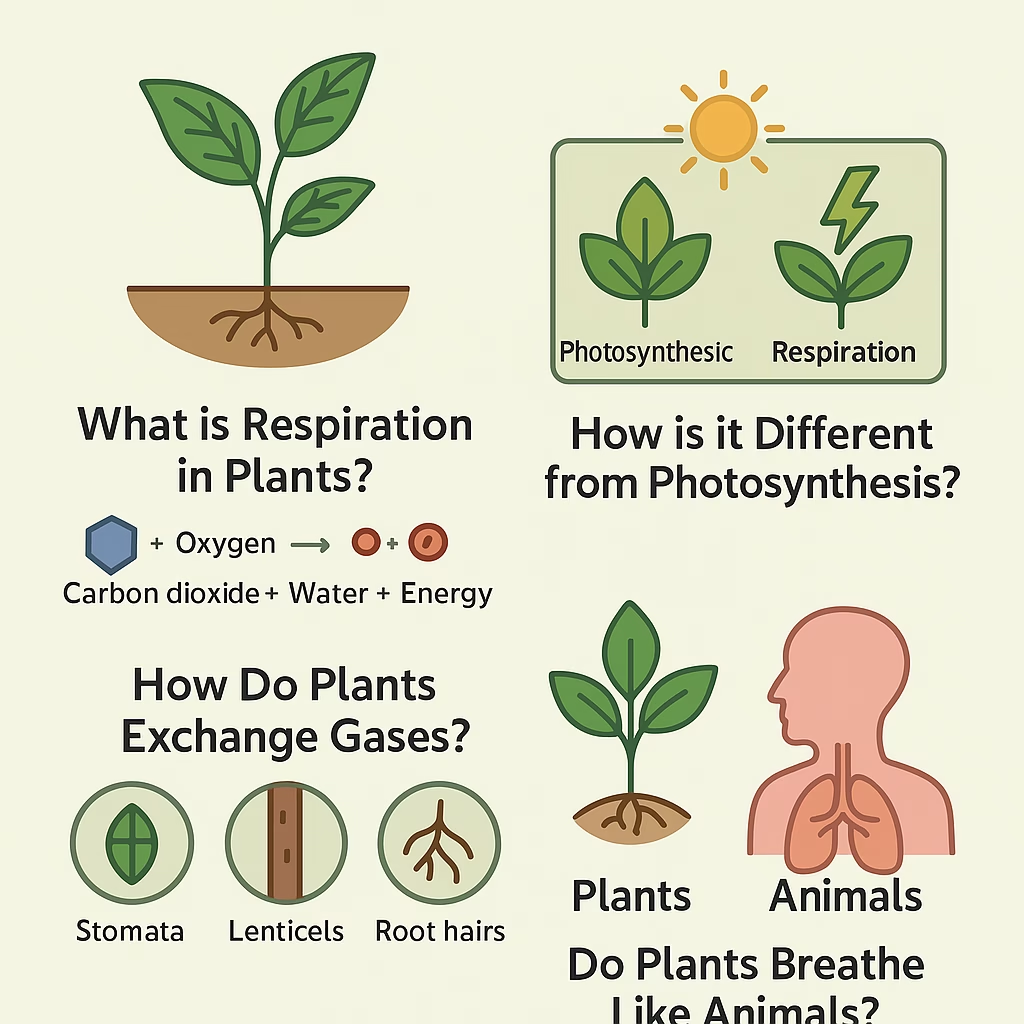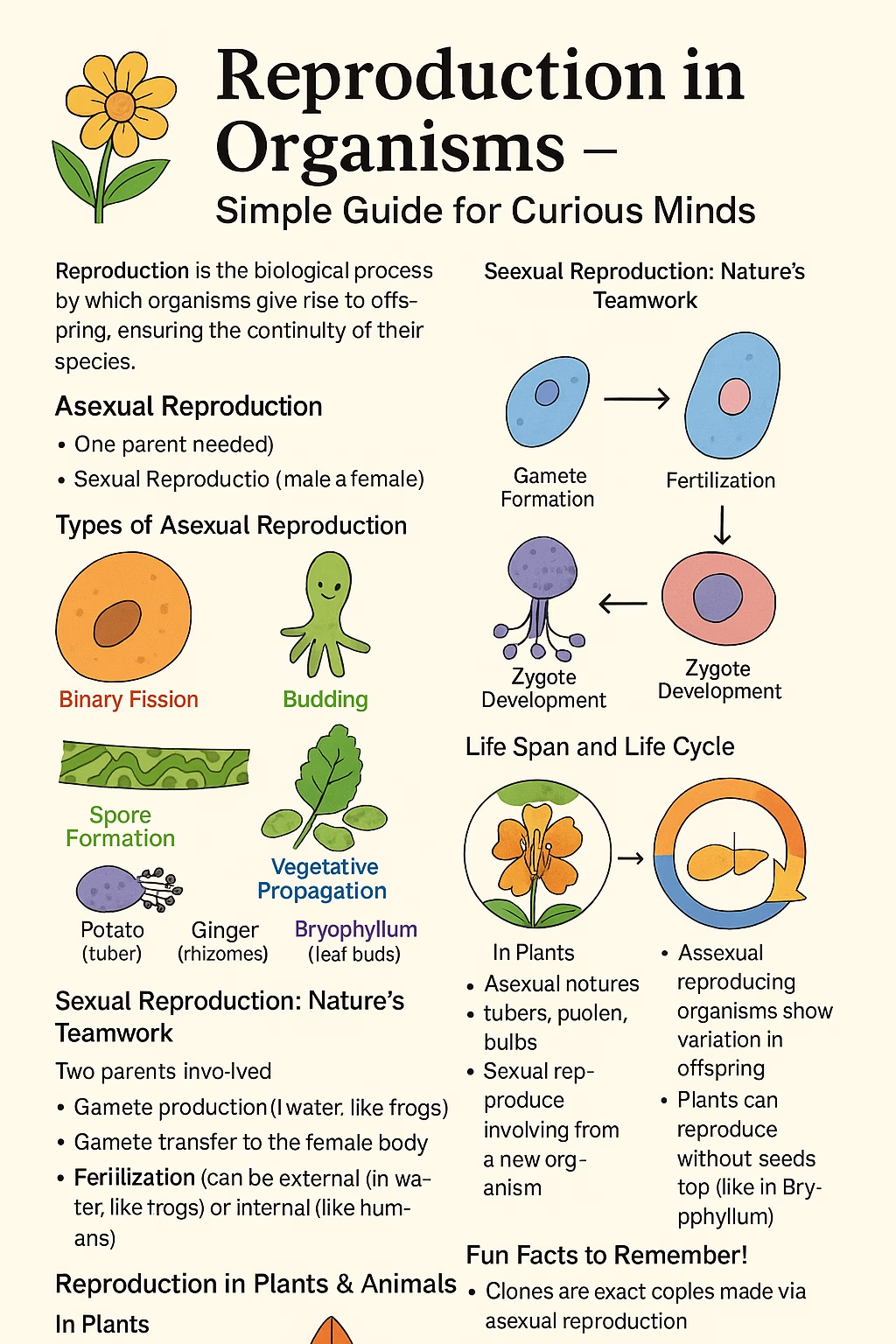Respiration in Plants
🌱 Introduction
You might wonder — do plants breathe like animals? The answer is yes, but not in the same way. Plants don’t have lungs, yet they need energy for survival. This energy comes from respiration, a biological process where food is broken down to release energy.
Let’s explore plant respiration in a simple and clear way.
🌬️ What is Respiration in Plants?
Respiration is the process by which plants break down food (mainly glucose) using oxygen to release energy, along with carbon dioxide (CO₂) and water as by-products.
🧪 Simple formula:
Glucose (C₆H₁₂O₆) + Oxygen (O₂) → Carbon dioxide (CO₂) + Water (H₂O) + Energy (ATP)
This energy is used in growth, repair, transport, and many other life processes.

🌿 How is Plant Respiration Different from Photosynthesis?
| Feature | Photosynthesis | Respiration |
|---|---|---|
| Time of Day | Happens during daylight only | Happens day & night |
| Raw Materials | Needs CO₂ and water | Needs oxygen and glucose |
| Products Formed | Produces glucose and O₂ | Produces CO₂, water, and ATP |
| Energy Role | Stores energy | Releases energy |
| Organs Involved | Takes place in chloroplasts | Takes place in mitochondria |
🌀 Where Does Respiration Happen in Plants?
Respiration occurs in every living cell of the plant, especially in structures like:
- Roots
- Stems
- Leaves
- Flowers
- Seeds
Inside cells, the key organelle involved is the mitochondrion, often called the “powerhouse” of the cell.
🌬️ How Do Plants Exchange Gases Without Lungs?
Plants use tiny structures for gaseous exchange:
- Stomata (on leaves): Tiny pores that open and close to allow gases in and out.
- Lenticels (on stems): Openings that allow oxygen to enter woody stems.
- Root hairs: Absorb oxygen from soil spaces.
✅ Each part of the plant handles its own gas exchange. No complex transport systems are needed like in animals.
⚡ Why is Respiration Important for Plants?
- 🔋 Provides energy (ATP) for all life activities
- 🧱 Supplies building blocks for new cells
- 💧 Produces water and CO₂ for reuse in other processes
- 🌱 Keeps the plant alive, growing, and functioning
📌 Quick Summary
- Plant respiration = breaking down glucose to release energy.
- Happens in all plant cells, day and night.
- Needs oxygen; produces carbon dioxide, water, and ATP.
- Different from photosynthesis, which builds food using sunlight.
🔍 FAQs About Plant Respiration
Q: Do plants only respire at night?
A: No. Plants respire all the time — day and night.
Q: Is respiration the same as breathing?
A: Not exactly. Breathing is the physical act of taking in oxygen, but respiration is a chemical process that happens in cells.
Q: Can plants live without oxygen?
A: Not for long. Like animals, plants need oxygen for energy.
📚 Suggested upcoming Reading:
All the Data has been collected from different sources Like NCERT,AI,Search engines
Regarding any query feel free to contact us spstudymbbs@gmail.com



Pingback: ✅ Krebs Cycle (TCA Cycle) Made Easy | With Steps & Diagram - sciencegajab